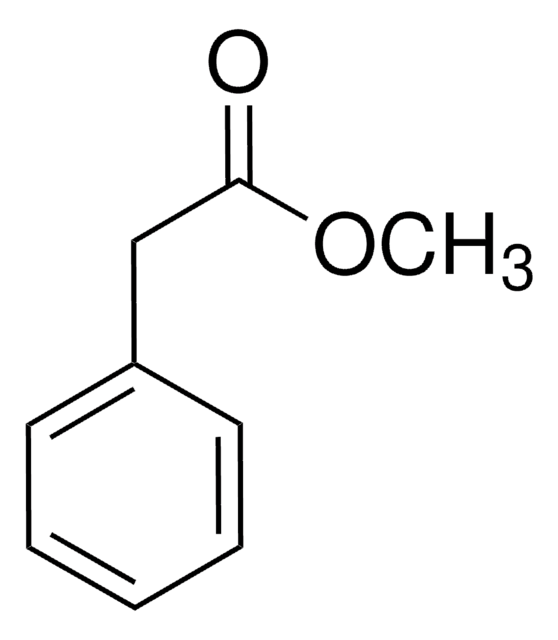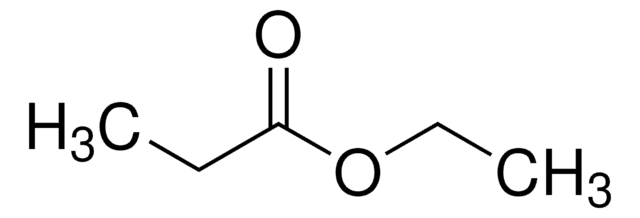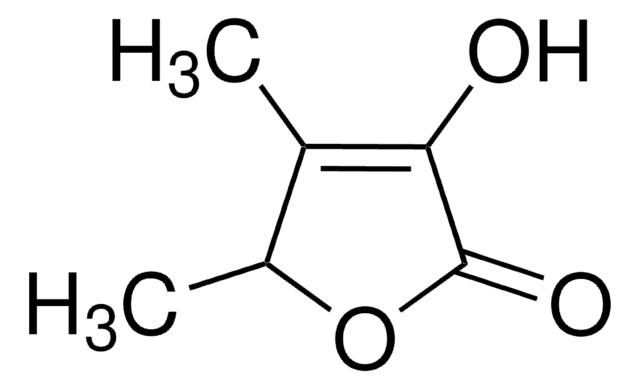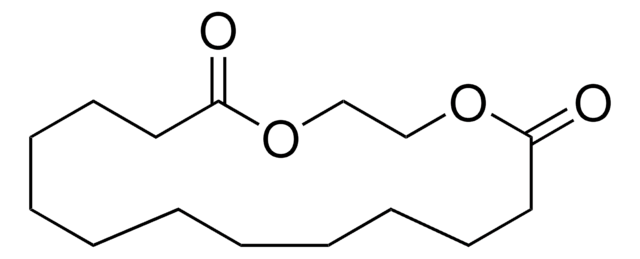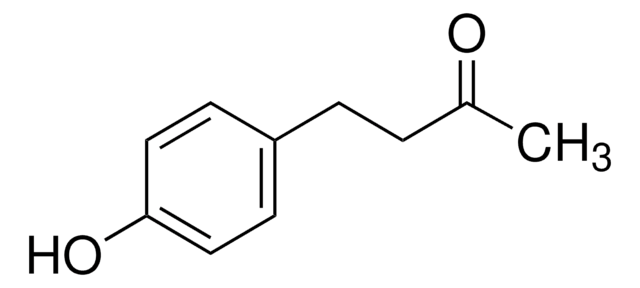W245208
Ethyl phenylacetate
≥98%, FCC, FG
Synonym(s):
Benzene acetic acid ethyl ester, Ethyl 2-phenylacetate, Ethyl alpha-toluate, Phenylacetic acid ethylester
About This Item
Halal
Kosher
Recommended Products
biological source
synthetic
Quality Level
grade
FG
Halal
Kosher
Agency
meets purity specifications of JECFA
reg. compliance
EU Regulation 1334/2008 & 178/2002
FCC
FDA 21 CFR 117
FDA 21 CFR 172.515
Assay
≥98%
refractive index
n20/D 1.497 (lit.)
bp
229 °C (lit.)
density
1.03 g/mL at 25 °C (lit.)
application(s)
flavors and fragrances
Documentation
see Safety & Documentation for available documents
food allergen
no known allergens
Organoleptic
cocoa; honey; balsamic; floral; rose; sweet
SMILES string
CCOC(=O)Cc1ccccc1
InChI
1S/C10H12O2/c1-2-12-10(11)8-9-6-4-3-5-7-9/h3-7H,2,8H2,1H3
InChI key
DULCUDSUACXJJC-UHFFFAOYSA-N
Looking for similar products? Visit Product Comparison Guide
Related Categories
General description
Biochem/physiol Actions
Other Notes
Storage Class Code
10 - Combustible liquids
WGK
WGK 2
Flash Point(F)
210.0 °F - closed cup
Flash Point(C)
98.9 °C - closed cup
Personal Protective Equipment
Regulatory Listings
Regulatory Listings are mainly provided for chemical products. Only limited information can be provided here for non-chemical products. No entry means none of the components are listed. It is the user’s obligation to ensure the safe and legal use of the product.
FSL
Group 4: Flammable liquids
Type 3 petroleums
Hazardous rank III
Water insoluble liquid
JAN Code
W245208-10KG-K:
W245208-5KG:
W245208-BULK-K:
W245208-5KG-K:
W245208-SAMPLE-K:
W245208-10KG:
W245208-SAMPLE:
W245208-1KG-K:
W245208-17KG:
W245208-1KG:
W245208-VAR-K:
Choose from one of the most recent versions:
Already Own This Product?
Find documentation for the products that you have recently purchased in the Document Library.
Customers Also Viewed
Global Trade Item Number
| SKU | GTIN |
|---|---|
| W245208-10KG | |
| W245208-1KG-K | 4061837545108 |
| W245208-5KG | |
| W245208-SAMPLE-K | 4061837512926 |
| W245208-10KG-K | 4061837512896 |
| W245208-1KG | |
| W245208-5KG-K | 4061837545115 |
| W245208-SAMPLE |
Our team of scientists has experience in all areas of research including Life Science, Material Science, Chemical Synthesis, Chromatography, Analytical and many others.
Contact Technical Service
